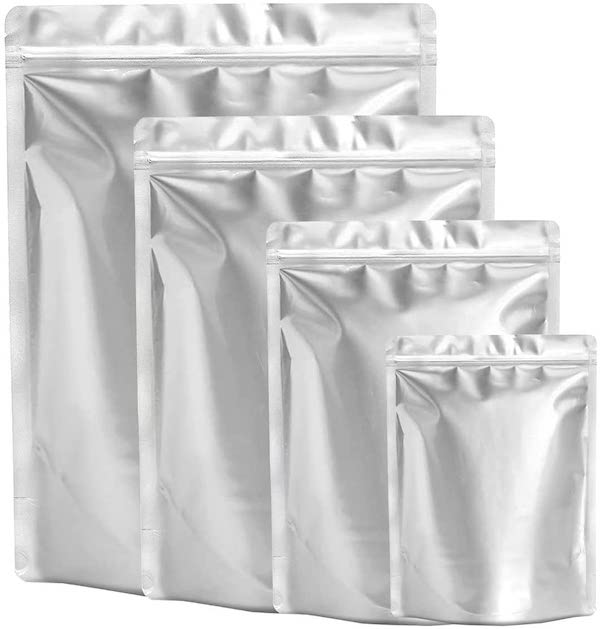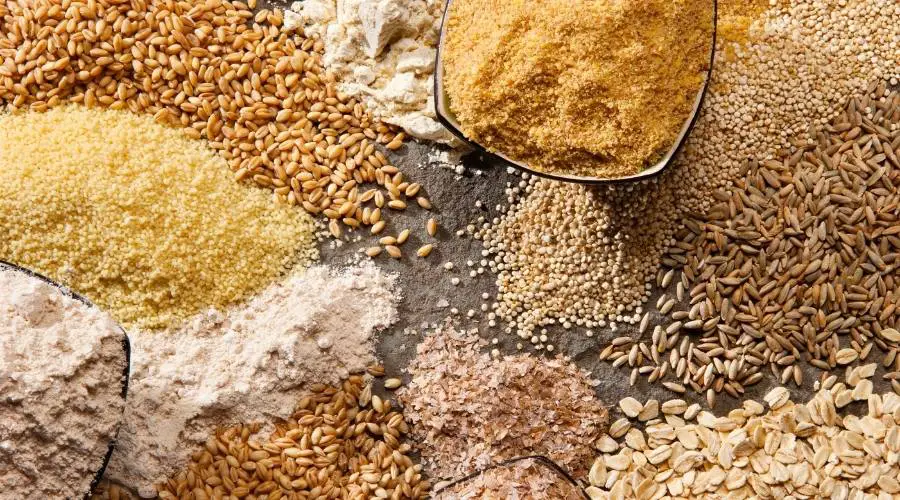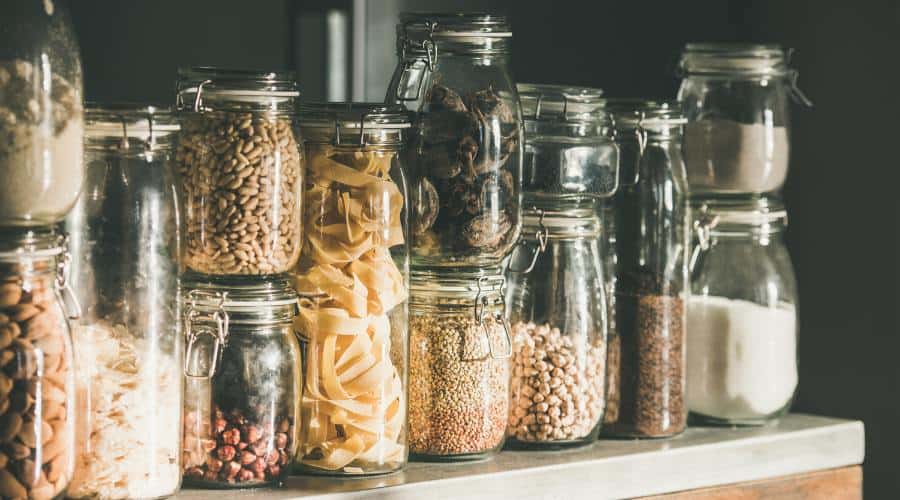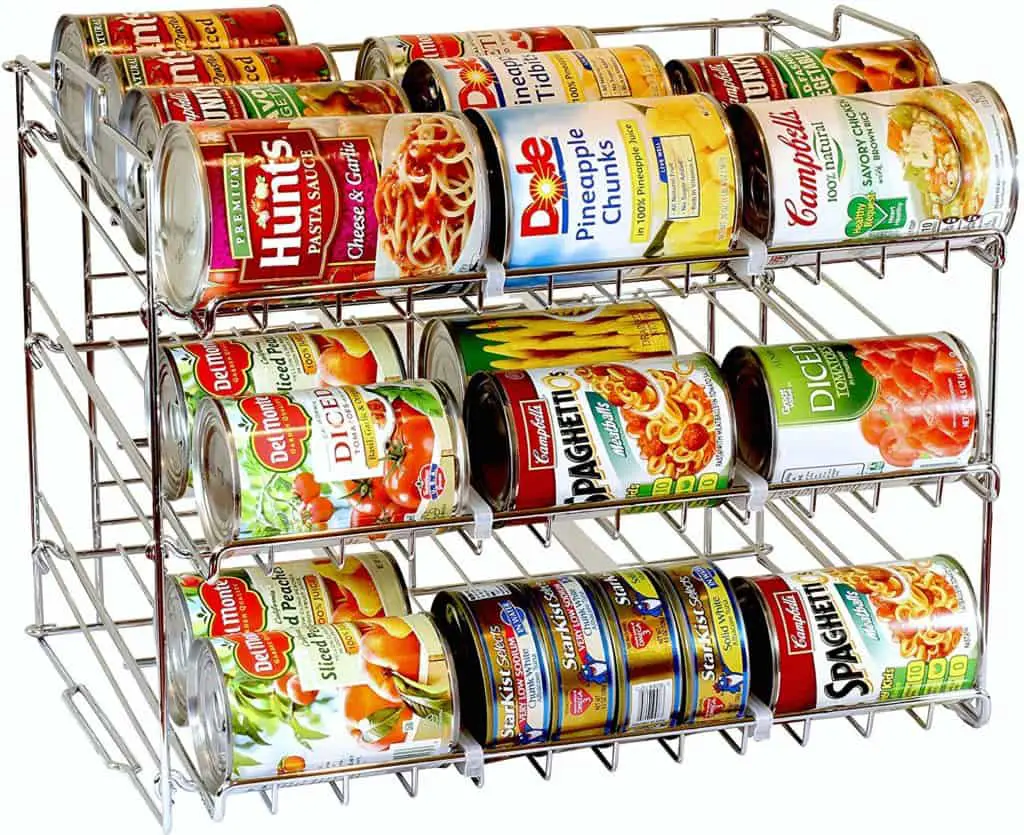Storing food in bulk long-term can be a great way to save money, reduce waste, and ensure that you always have a supply of non-perishable items on hand. Whether you’re a prepper, a homesteader, or just someone who wants to be more self-sufficient, learning how to store food in bulk is an essential skill.
What is the Best Way to Store Food in Bulk Long-term?
The best way to store bulk food long-term is to use airtight containers that will keep out moisture, pests, and light. Store dry goods in a cool, dry place, and freeze or can perishable items to extend their shelf life. Use vacuum sealers for long-term storage and regularly rotate your stored food to ensure that it doesn’t expire before you have a chance to use it.
There are many different ways to store food in bulk, and the best method for you will depend on your needs and the type of food you’re storing.
Here are some tips for storing food in bulk long-term:
Before you buy too much bulk food make sure you know where to buy bulk food online at a discount or find an Amish bulk food store near you. Also, determine if buying bulk food is actually cheaper for you so you know how much and what foods to buy in bulk.
Additionally, see 9 simple ways to save money on bulk foods. We put together useful tips that’ll help anyone save money on bulk foods and groceries or check out these cheapest grocery stores near you.
Choose Suitable Airtight Containers
When storing bulk food long-term, it’s important to choose the right containers to ensure that the food stays fresh and protected.
Here are some tips for choosing the right containers:
- Use food-grade containers. Make sure that the containers you use are made of food-grade materials and are safe for storing food. Avoid using containers that have previously held toxic or non-food items, as these may leach chemicals into the food.
- Look for airtight containers. Choose containers that have tight-fitting lids or seals to keep out moisture, pests, and light. This will help to prevent the growth of mold, bacteria, and other microorganisms, as well as preserve the quality and flavor of the food.
- Consider the size of the container. Choose containers that are large enough to hold the amount of food you want to store, but not so large that they will be difficult to move or store. It’s also a good idea to have a variety of container sizes on hand so that you can choose the right size for different types of food.
- Think about the material of the container. Different materials have different benefits and drawbacks when it comes to storing food. Plastic containers are lightweight and inexpensive, but they may not be as durable as glass or metal containers. Glass containers are heavy and breakable, but they are non-reactive and do not leach chemicals into the food. Metal cans are durable and resistant to pests, but they can be heavy and expensive. Mylar bags are one of the better options.

We generally use mylar bags, food-grade plastic bags and buckets, and glass jars for storing our bulk food storage long-term. We like the Wallaby mylar bags (see price on Amazon) and they come with oxygen absorbers (see how to use oxygen absorbers in dry food storage)
By considering these factors, you can choose the right containers for storing your bulk food long-term. For help choosing good food containers see our top choices of airtight pantry containers.
Storing Dry Goods
We should all store dry goods such as wheat berries, flour, rice, pasta, and other non-perishable goods. To store dry goods long-term, you’ll need to choose the right containers and store them in a cool, dry place.

Here are some specific steps you can follow:
- Choose the right containers. Use airtight containers that will keep out moisture, pests, and light, such as food-grade plastic buckets with tight-fitting lids, glass jars with screw-top lids, or metal cans with sealed lids.
- Store the dry goods in a cool, dry place. Dry goods like grains, flour, sugar, and pasta can last for several years if they are stored in a cool, dry place. Avoid storing them in damp or humid conditions, as this can cause the food to spoil.
- Consider adding a moisture absorber. If you’re concerned about moisture in your storage area, consider adding a moisture absorber to your containers. A moisture absorber, such as a packet of silica gel, will absorb any moisture that may be present in the container, helping to prevent the growth of mold and other pests.
- Consider using oxygen absorbers. Foods that are dry enough should be stored with oxygen absorbers. Oxygen absorbers ultimately reduce the presence of oxygen in a food container creating a higher concentration of nitrogen, which is a better environment for extending the shelf life of dry food storage. Learn exactly how to use oxygen absorbers in dry food storage.
- Label the containers clearly. Use a permanent marker to label each container with the type of food it contains and the date it was stored. This will help you to keep track of what you have and when it needs to be used.
By following these steps, you can effectively store dry goods long-term and keep them fresh and protected.
Freeze, Can, or Freeze Dry Perishable Foods
Freezing, canning, freeze drying are three methods of preserving perishable foods that can extend their shelf life and make them suitable for long-term storage. For more ideas to help expand your bulk food storage make sure to check out the top 10 foods that are cheaper to buy in bulk.
Freezing:
- Choose the right packaging. Use airtight packaging, such as freezer bags or containers, to protect the food from freezer burn and prevent the growth of bacteria and other microorganisms.
- Wrap the food properly. Wrap the food in a layer of plastic wrap or aluminum foil to create an additional barrier against moisture and air.
- Label the packaging. Use a permanent marker to label each package with the type of food it contains and the date it was frozen. This will help you to keep track of what you have and when it needs to be used.
- Store the food in the coldest part of the freezer. The coldest part of the freezer is usually at the back, so try to store your frozen food there to help it stay fresh for as long as possible.
Canning:
- Choose the right equipment. To can food, you’ll need a pressure canner or a boiling water bath, as well as jars with tight-fitting lids and bands.
- Prepare the food. Wash the food and cut it into small pieces if necessary.
- Pack the jars. Fill the jars with the prepared food, leaving a certain amount of headspace at the top (the exact amount will depend on the type of food you are canning).
- Add the lids and bands. Place the lids on top of the jars and screw on the bands until they are fingertip-tight.
- Process the jars. Place the jars in the pressure canner or boiling water bath and process them according to the manufacturer’s instructions. This will kill any bacteria and seal the food in an airtight jar, making it shelf-stable for several years.
See if a pressure canner is worth it for you and check out our comprehensive list of foods that can and cannot be pressure canned.
Freeze Drying:

Freeze drying is a preservation method that removes moisture from food, making it lightweight and shelf-stable. Freeze drying perishable foods can extend their shelf life and make them suitable for long-term storage. See in more detial how to store freeze dried food long-term.
Here’s how to freeze dry perishable foods:
- Choose the right equipment. To freeze dry food, you’ll need a freeze dryer, which is a specialized appliance that removes the moisture from food using a process called sublimation. See if owning your own freeze dryer is worth it for you.
- Prepare the food. Wash the food and cut it into small pieces if necessary.
- Place the food on the freeze dryer trays. Arrange the food in a single layer on the trays of the freeze dryer, leaving enough space between the pieces for air to circulate.
- Set the freeze dryer. Follow the manufacturer’s instructions to set the freeze dryer and start the drying process. The drying time will depend on the type and quantity of food you are freeze drying.
- Package the freeze dried food. Once the drying process is complete, remove the freeze dried food from the trays and package it in airtight containers or bags.
- Store the freeze dried food. Store the freeze dried food in a cool, dry place, away from direct sunlight and sources of moisture.
We own a home freeze dryer and enjoy it but they may not be right for everyone. See if buying a home freeze dryer is right for you and what foods you can and cannont freeze dry.
By following these steps, you can freeze, can, or freeze dry perishable foods to extend their shelf life and make them suitable for long-term storage.
Use a Vacuum Sealer for Storing Bulk Foods Long-term
A vacuum sealer is a great tool for long-term food storage, as it removes the air from the packaging and creates an airtight seal around the food. This helps to prevent the growth of bacteria and other microorganisms, as well as preserve the quality and flavor of the food. Find out if a vacuum sealer is worth it for you.
Here’s how to use a vacuum sealer for long-term food storage:
- Choose the right bags or rolls. Vacuum sealers work with special bags or rolls that have a layer of material that can be sealed by the vacuum sealer. Make sure to use bags or rolls that are specifically designed for vacuum sealing.
- Prepare the food. Wash the food and cut it into small pieces if necessary.
- Place the food in the bag or roll. Arrange the food in a single layer in the bag or roll, leaving enough space around the edges for the vacuum sealer to create a seal.
- Seal the bag or roll. Follow the manufacturer’s instructions to seal the bag or roll using the vacuum sealer. The vacuum sealer will remove the air from the bag or roll and create an airtight seal around the food.
- Store the vacuum sealed food. Store the vacuum sealed food in a cool, dry place, away from direct sunlight and sources of moisture. Vacuum sealed food can last for several months to a few years, depending on the type of food and the storage conditions.
By following these steps, you can use a vacuum sealer to store food long-term and preserve its quality and flavor. Vacuum sealers are a great way to store a wide variety of items, including meats, grains, and even produce.
Rotate Your Food Regularly
Rotating your long-term food storage regularly is an important step in ensuring that you use the oldest items first and keep the newer items at the back. This will help you to prevent waste and ensure that you are using your stored food before it expires. Here are some tips for rotating your long-term food storage regularly:
- Use a food rotation system. A food rotation system involves using a system of dates and labels to help you keep track of when you added items to your storage and when they need to be used. There are many different food rotation systems available, but a common one is the “FIFO” system, which stands for “first in, first out.” With this system, you place the newest items at the back of the storage area and use the older items first.
- Keep a list of what you have in storage. Consider creating a spreadsheet or writing a list of the items you have in storage and where they are located. This will make it easier to plan meals and ensure that you are using your stored food before it expires.
- Use expiration dates as a guide. Check the expiration dates on your stored food and use the oldest items first. If you are using a food rotation system, you can use the expiration dates as a guide for when to use each item.
- Regularly check your stored food. Make a habit of regularly checking your stored food and looking for any signs of spoilage or expiration. If you find any items that are no longer fresh, use them as soon as possible or consider donating them to a food bank.
To help we have found having a good canned food organizer and rotator very useful and even indispensable. We found one that is cheap and works well to rotate cans making FIFO easy. It is the DecoBros Stackable Can Rack Organizer (Click here to check the current price on Amazon). When we bought a couple of them they were only listed at about $24 for each rack and it comes with adjustable plastic dividers making them able to accommodate various can sizes. It’ll store up to 36 cans depending on the can sizes being stored. This canned food organizer can help you put our food storage calculator to use by helping you build a functional rotating food storage, making organizing as easy as pie!
By following these tips, you can effectively rotate your long-term food storage and ensure that you are using your stored food before it expires. This will help you to save money, reduce waste, and always have a supply of non-perishable items on hand.
Keep Your Bulk Food Storage Organized
It is essential to have a good plan and system for keeping your bulk food storage organized. You can do this by labeling all your bulk food storage clearly, using bins and shelves, keeping a dated list, using a rotation system, and keeping commonly used foods within reach.
We have laid out a great bulk food organization plan and system to help you know exactly how to organize your bulk food storage.


